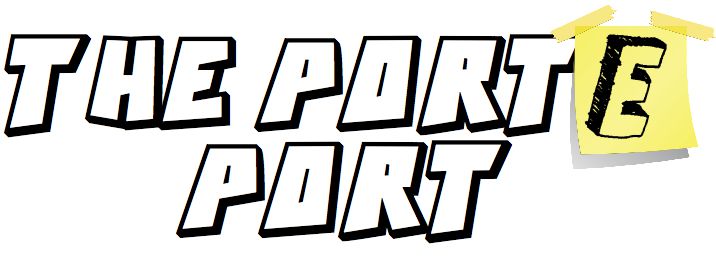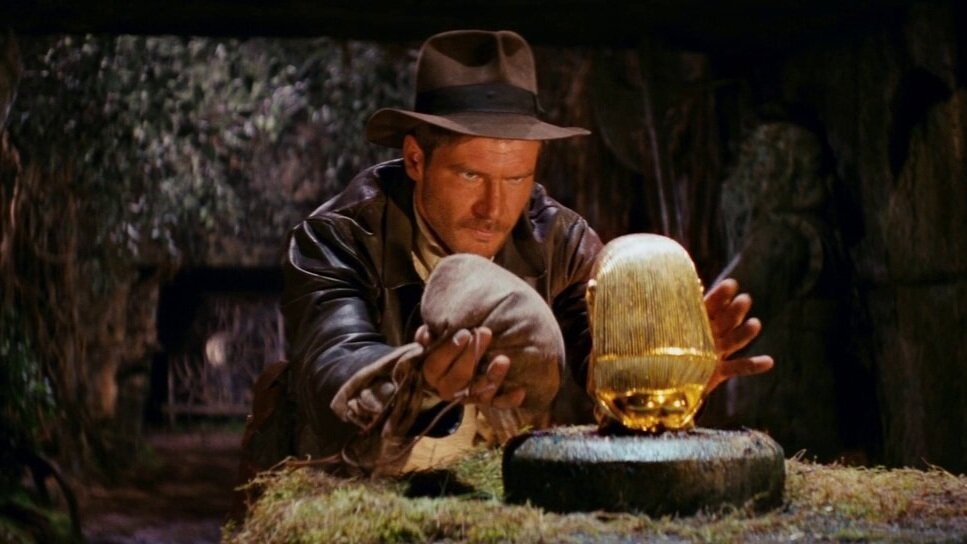Indiana Jones and How to Write a Legendary Story Hook
You grab a new book that’s been patiently waiting on your bookshelf.
You open it and start to read.
A few pages go by...and not much happens.
Then you finish chapter one. Still barely a pulse.
Surely, this book will start soon, right?
A few more pages, and you’re getting bored.
Now what do you do?
Keep going?
It’s 872 pages for Christ’s sake!
Ugggg
And we’ve all been there.
The story that never really grabs us.
But here’s the really terrifying thought:
What if that was your book that was thrown aside and never read again?
What if your book started, and your reader thought, “Wow...this is boring as hell.”
What if you had all this good stuff packed into a book…
...incredible characters
...plots with all kinds of twists and turns
...and a world that feels so alive that your reader can plop themselves right down in it.
Except you can’t pull what I call “a Leo” on them.
You need to take that curiosity readers have about your book and grab their attention. Then it’s your job to hold on to them and never let go for the entirety of your novel.
Your story needs a damn good hook.
Why is a Story Hook Crucial?
There’s a simple answer: people have zero attention span and care only about themselves.
Your book’s hook...ooo that’s fun to say...is responsible for grabbing their imagination and making a promise that this story is worth it.
How do you convince someone to give you hours upon hours of their life?
It ain’t easy.
But it’s certainly not impossible, and there’s some key things to remember.
Most of writing a good story hook is remembering everything that goes into it.
You have to establish, in a very short amount of time, these things:
Characters the reader actually gives a shit about
A world they want to learn more about
An incident that takes those characters out of their normal life
And establish conflict with the antagonist(s) your reader is going to love to hate
It’s best to see these things in practice.
That’s often the annoying thing about writing advice. It typically says what you have to do, then gives you no help on how to actually do that.
Like, cool, I have to have an exciting plot? Who knew??
Let’s try to avoid that here, shall we? We are going to dive into specifics.
Time to take a look at one of the best hooks of all time to give you a concrete example. I remember watching it for the first time and instantly falling in love with the character, story, everything.
To the point that I gladly watched all the other movies. But let’s be frank, the rest kinda suck. Yeah, I said it—all of them.
Yet, this hook is so incredible we all think we like the original trilogy of movies. We don’t, let’s stop lying to ourselves.
Nah, if you like the other ones, that’s cool.
The Legendary Story Hook in Raiders of the Lost Ark
Let’s break down, scene by scene, the opening to Raiders of the Lost Ark.
From the Paramount logo melting into the backdrop to Indiana Jones* bitching about a snake on a plane (the OG)–let’s see how Raider does it so well.
*DISCLAIMER: At the end of this article I’m going to rant about how terrible Indy is as a human being, so stick around! Nothing like dumping on a movie icon to top things off.
If, for whatever reason, you need a refresher on how this movie starts, you can check out most of it again right here:
Here’s exactly how to build a kick-ass hook as told by Raiders of the Lost Ark:
1: Set the intrigue and get the audience asking questions.
Raiders even uses the credits to get things rolling.
Who’s this ragtag group of explorers?
You are instantly put into a foreign environment recognizable by the cliche jungle bird sounds synonymous with adventure.
Where are they going, and what are they doing?
They encounter a stone carving, and one of the explorers screams bloody murder. Like, dude, calm down. That’s a guy you do not take to a horror movie.
But why the reaction? This stone face is marking something. Danger may lie ahead.
And we watch. Wondering. Curious.
Curiosity is precisely where you want to start.
2: Introduce the element of danger.
A dart is stuck in a tree. The explorers check it out. Worry starts to overcome them as they realize it’s tipped in poison.
The tribe living in this jungle, The Hovitos, might be tracking them.
Who are they?
Why are they so dangerous?
Probably has something to do with the asshole white guy leading this group trying to steal their artifacts, but more on that later.
Will they encounter this group out here with no escape and no help?
Let’s watch.
The curiosity is compounded upon.
3: Introduce your protagonist
Walking out of gun smoke. Doesn’t get much more iconic.
Now, I won’t say “a badass introduction to your protagonist” because they might not be badass.
Indiana Jones is a badass. A terrible, terrible badass.
One of these explorers turns on Indy. Maybe he knows they are close to their destination and wants the artifact for himself. Or perhaps he just doesn’t like the idea of a ton of poison darts in his back.
Well, I got bad news, bud.
Raiders establishes a key thing here:
Conflict.
Ooo man, you gotta have it. That tension. That push and pull of what the hell is about to happen. The many things that get in the way of our hero.
It’s the fuel of any good hook.
And Indiana Jones foils the attempt on his life by his so-called ally like it’s nothing.
Calm.
Cool.
Harrisony.
4: Set up the life and death stakes
If it wasn’t already blatantly obvious, the characters are in a dangerous situation.
But Raiders turns the knife a little more.
This isn’t the first time someone has tried to do whatever it is that the adventurers are trying to do. Indy knew a guy who was “...good. He was very good.”
Yet, he never came back. In fact, no one has.
And our hero is...going to go in there?
Whatever we thought was dangerous out here in the jungle ain’t got nothing on what’s inside that cave.
5: Spiders
Fuck spiders.
6: Complications make heart-pounding tension
Time to set up all the complications that build tension and lead to a sweat-soaked climax. Phrasing.
Each point makes us more invested. It draws us in, and then action kicks off, and we stop breathing for a few minutes.
Here’s how it plays out (and how it helps our stories):
Indy finds the remains of his old rival that didn’t make it out.
This raises the stakes even more.
There’s a pit they have to swing over, and they damage the branch.
A signal of foreshadowing to a future complication.
The idol room is brimming with traps that Indy carefully goes around.
Step by step, more tension, and he even loses his balance at one point. (Nice touch Stephen).
Oooo shiny
He gets to the idol and tries to switch it out.
Through show, not tell we see he has to guess the weight of the idol.
...Why the hell would he do that?
Oh shit! The whole place is coming down because it knows the idol is taken!
We can be given questions by the story that action answers...this is yet another form of tension.
...now the story has our attention (Leo comes full circle.)
Indy sprints through the traps, arrows flying everywhere.
We tense up knowing there’s step after step of triggers on the ground. The slow scene moments before built tension, and now it adds to the stakes of this scene.
His “ally” breaks the branch they were swinging on to get over the pit.
We already saw this coming
He trades the idol for the whip like an idiot and has to dash over the pit anyway because he has the worst friends possible.
With a time element added with the closing door, every second Indy hesitates, gives us knots in our stomach.
Indy grabs onto a vine to pull himself out of the pit as the door is about to close him in.
Give your audience a moment of hope. He’s got this!
The vine nearly breaks just when we think he’s getting out.
Shit!
He rolls under the door finally, getting his whip at the very last second.
Did he make it? Can we breathe? It’s essential to have these tiny moments as you keep your reader guessing.
We face his newly deceased terrible friend, and he gets the idol back.
I mean, he deserves it. Now we are back on track, right?
Only to have a giant boulder coming out of nowhere that nearly runs him down.
This new element adds one last danger. It’s all about escalation. The danger gets crazier and crazier as the traps go off. Lead your reader into worse and worse scenarios.
And he dives out of the cave right into the hands of The Hovitos.
Even though he leaps out of the cave, he dives right into danger. The audience can’t catch a break. But this was earned. We knew they were out here in the jungle and established. (So important to making this scene realistic.)
Jesus Christ.
7: Introduce the antagonist and why we should hate them.
Adding insult to injury, Indy is not only caught by Hovitos but by his arch-nemesis Belloq. (Apparently, archeologists have a nemesis.)
Our antagonist instantly makes himself hated.
All this work, all the tension, all the clever, skilled, lucky, hustle that Indiana Jones just went through is taken away.
This piece of shit Belloq sits on the sidelines while someone else does the hard work, manipulating a native population to do his bidding, then steals the artifact for himself to make a profit.
Are we sure this guy isn’t American?
We hate him so much! The tension in the hook plays right into that. Everything we just experienced is stripped away.
It’s actually the whole point of the hook in this case. We are introduced to what Indy does and what stands in his way. Belloq.
Otherwise, the artifact here never plays in the story again. It’s all a set up for characterization.
8: Let your audience be a little hopeful
Indy escapes Belloq, in a full sprint towards his escape plane.
Galla…galla…Gallimimus! Nope, wrong movie.
All that action comes down to him having to hope for the best to keep his life. He can’t worry about the idol or anything else.
(Although the real tragedy is that his pilot, Jock, catches a fish right when all of this is going down and has to give it up. Hurts me every time.)
But Indy makes it out alive in a narrow escape.
The classic John Williams theme plays for the first time as Indy swings over to the plane, and they take off.
There’s something hopeful about it. No matter what Indy encounters, he will find a way out. And it’s going to be one hell of a ride getting there.
And we take a breath for the first time in almost exactly 13 minutes.
The hook sets us up to be completely invested in the rest of the movie. The exposition can come now, and we will listen intently.
Why?
Because this hook promises us even more thrills to come. Curiosity turned to full attention.
Creating a Throat-Grabbing Hook in Your Story
I remember when I first saw the Raiders intro.
I leaned forward, literally on the edge of my seat. That’s super rare for a movie.
I didn’t like any scary stuff in movies as a kid (or now), but I would put up with the skeletons and the face-melting for this intro alone.
I remember my dad said something along the lines of how he needed to go pee by the time this scene was over the first time he saw it in theaters.
I still tense up when the damn root or vine or whatever over the pit gives way.
And I hate Belloq.
That’s what you want from your hook.
It plays out differently in a book, I’ll give you that.
I don’t think I’ve ever leaned forward while reading, but I read faster during a tense scene. I can blow through the action of a book, losing all track of time.
And that’s what you want in your hook. You don’t need Raiders of the Lost Ark levels of danger, but you need to draw your reader in and keep them there.
What makes your protagonist someone we root for? Even if they’re antiheroes.
What stands in their way?
Will we believe the complications and care how our protagonists navigate them?
Do we understand the stakes after the hook?
We need a reason to keep reading.
Think of the classic story structure:
Inciting Incident
Complications/Rising Action
Crisis
Climax
Resolution
Your whole story needs that, but every scene and story beat needs it too.
Including your hook.
Take a look at the hook structure for Raiders.
Inciting Incident: Indy dives deep into a dangerous jungle to find an artifact.
Complications: Dangerous Hovitos, and spiders, and lethal traps.
Crisis: How will Indy properly grab the idol without triggering the temple security system?
Climax: He triggers the temple security system and needs to make it to the plane with his life.
Resolution: He makes it, hates snakes, and promises us more adventure.
It’s exactly how you need to set up your hook.
What triggers it?
What complications arise from that trigger?
What question stands in the way of achieving the goal?
How does the action of that question play out?
How will the rest of the story be set up based on what we just experienced?
Invest your reader in the protagonist. Get them to care about everything else that will happen to them.
Raiders is so good at making us like Indy we freely ignore:
-That he tries to steal a current cultural artifact from an active tribe.
-That the plane has ONE passenger seat. Guess he’s happy his helpers all died off to avoid that awkward conversation.
-That he originally met Marion when she was maybe 16, and he was probably 25ish. AT BEST. Come on!
-That he’s a terrible teacher. It’s obviously mid-semester, and he’s first introducing the word Neolithic. Isn’t that day one stuff? And he can’t even spell it!
-That he rips part of Marion’s dress off to keep the torches going in the snake pit but never actually uses it to keep the torches going. Essentially it was just to rip some of her dress off.
-That every not white person is a tool to be used to get what he wants.
You look super cool Indy, but can you at least pretend to help?
Ok, rant over.
(I love Raiders, calm down.)
If you want your reader to invest their time...
...set up the promise for an engaging, thrilling story.
...introduce deep and likable characters–and hateable characters for that matter.
...showcase that you can set up tension. That’s what will grab readers and won’t let go.
In marketing and copywriting, it’s called a slippery slope. Each and every line needs to make a reader slip to the next. Every scene has a purpose that drives the reader to want that next scene.
And much like a slippery slope, your reader won’t be able to stop.
You have them hooked, time to real them in.
If you like this geeky movie stuff, I’ve got more where that came from. Sign up for my newsletter to explore movies, books, shows, and games to find the storytelling techniques that will make you a better writer.
Check it out:












